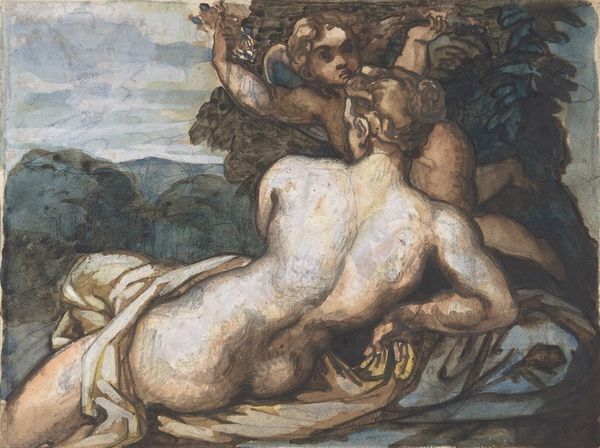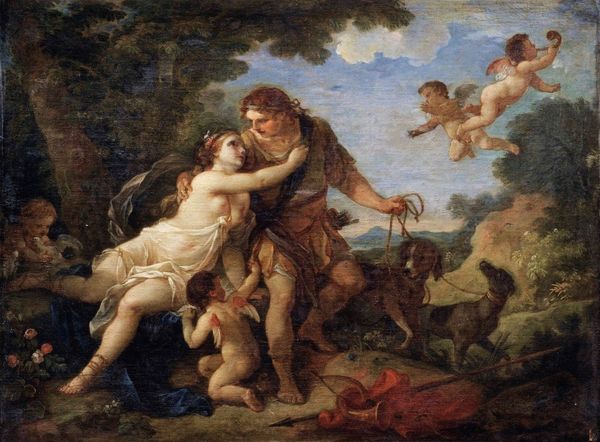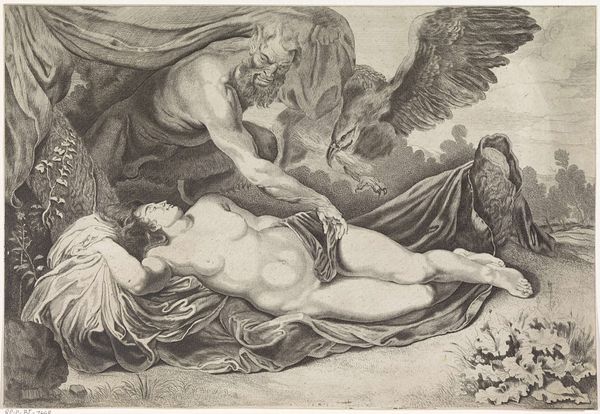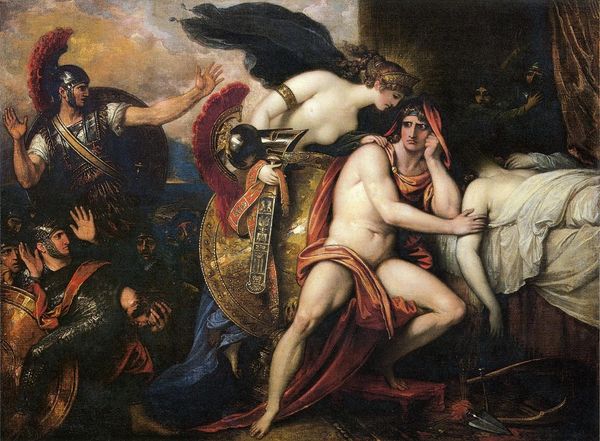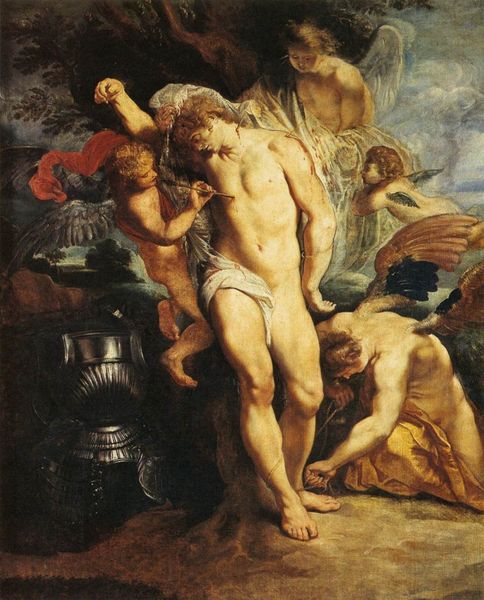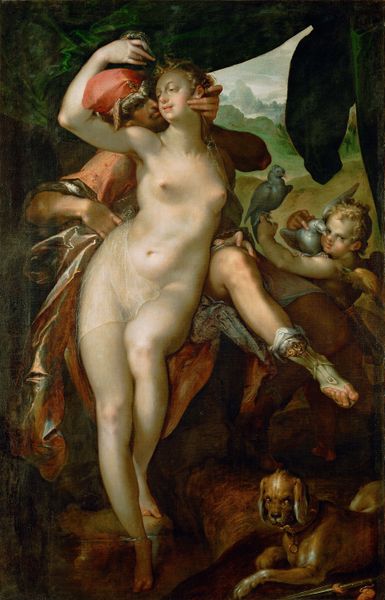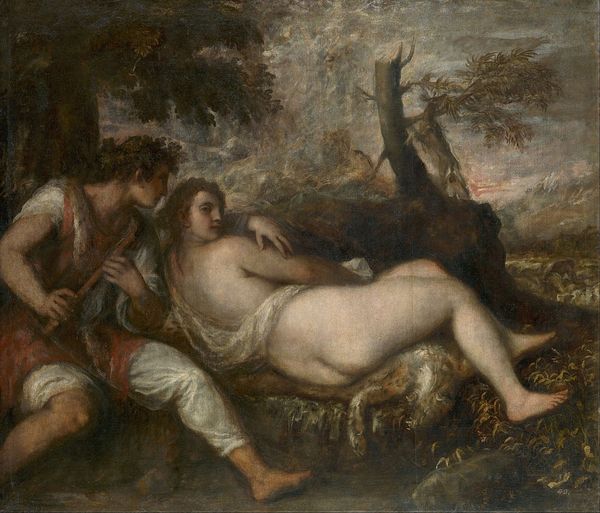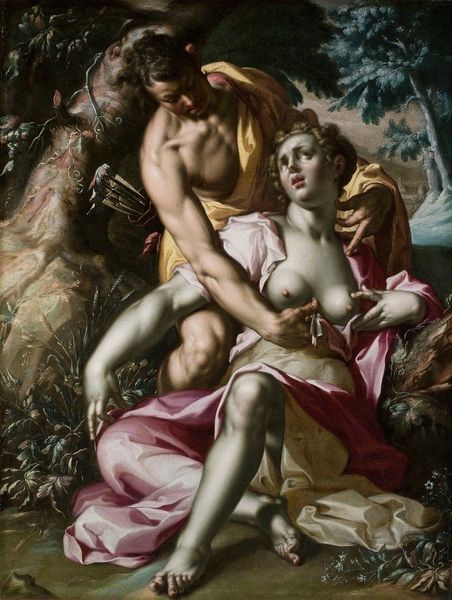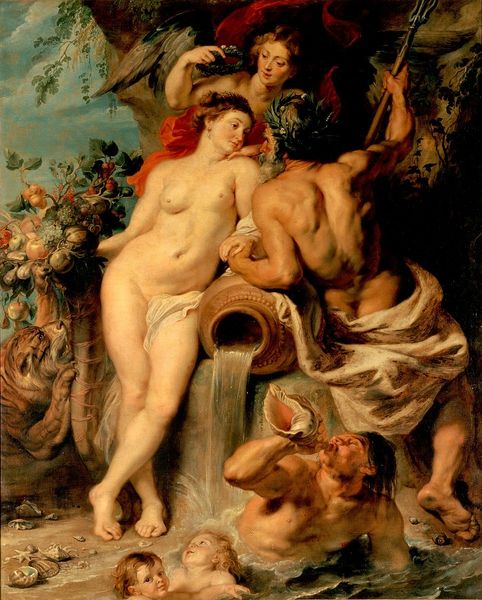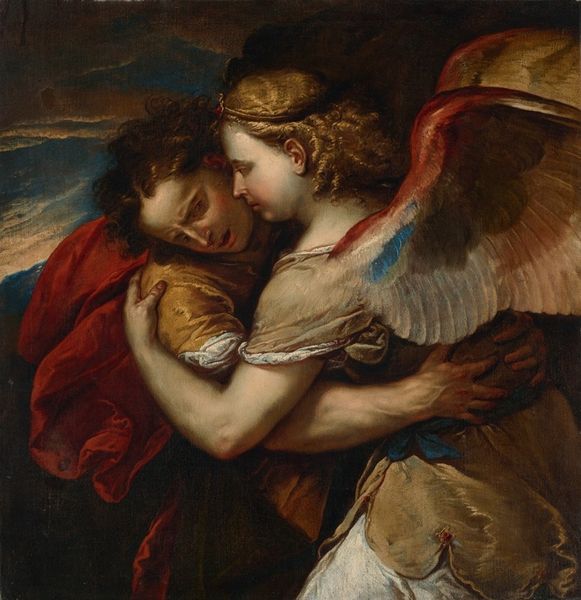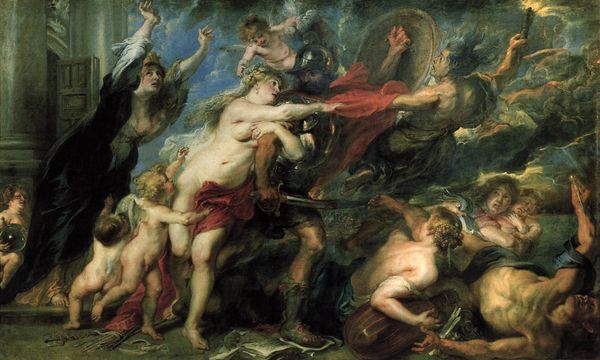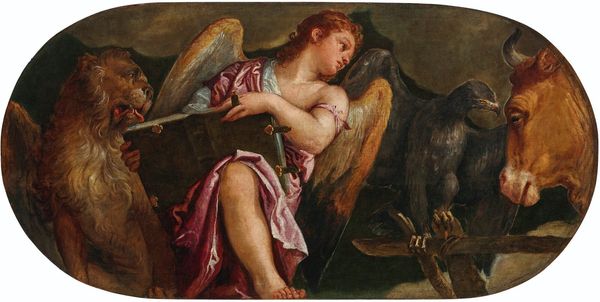
Dimensions: sight: 70.49 x 90.81 cm (27 3/4 x 35 3/4 in.)
Copyright: CC0 1.0
Curator: Watts' “Orpheus and Eurydice” captures the tragic moment of their final parting. The figures seem almost to dissolve into the murky background. Editor: It’s incredibly melancholic. The soft brushstrokes and muted palette create such a heavy atmosphere, reflecting the sorrow of the myth. Curator: Watts, who lived from 1817 to 1904, often tackled grand, allegorical themes in his work. The tale of Orpheus, who fails to bring his beloved Eurydice back from the underworld, was particularly resonant with Victorian sensibilities. Editor: Note the spatial relationship. Eurydice is almost an extension of Orpheus’s arm. This closeness highlights the anguish of their separation, a rupture in the visual field. Curator: This painting is now held at the Harvard Art Museums. The historical reception of Watts emphasized his moral and philosophical aims, though now, questions of gender and power dynamics within his depictions of women are often raised. Editor: It's a powerful example of how formal elements like color and composition can convey profound emotional weight. I am struck by how the dissolution of the figures is very well a metaphor for their doomed love.
Comments
No comments
Be the first to comment and join the conversation on the ultimate creative platform.
